The betel leaf is a plant that is gaining popularity all over the world. It has been used for centuries in
Asia for its medicinal properties, and now people are starting to realize how great it is for culinary purposes as well.
This plant can be found in many different parts of the world, and it grows best in USDA zones 9 through 11.
If you are interested in learning more about this plant, or if you want to know how to grow your own betel leaves, keep reading!
About Betel Leaf
The betel leaf is a member of the Piperaceae family, and it is closely related to black pepper and kava.
The plant is native to tropical Asia, and it has been used in traditional medicine for centuries.
Betel leaves are very popular in India, where they are often chewed with betel nuts and spices.
Chewing betel leaves has been shown to improve oral health, and it is also said to help with digestion.
The betel leaf is a climbing vine that can grow up to 30 feet in length. The leaves are dark green and glossy, and they can be either whole or split.
Preferred USDA Zone
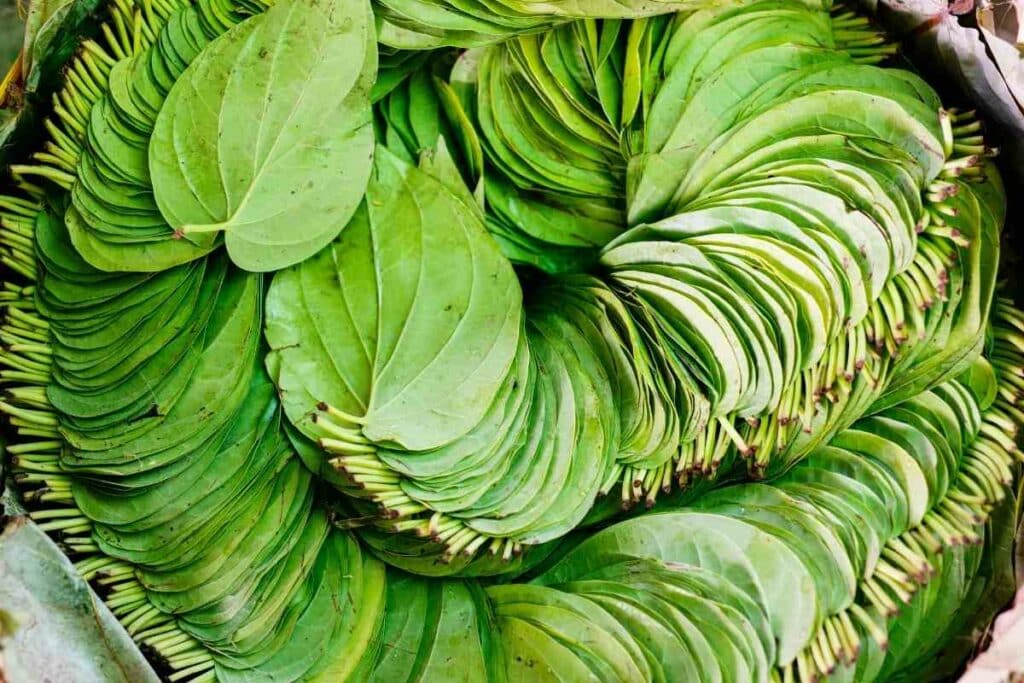
The best USDA zone for betel leaf is zone 9 through 11 because these zones have the warmest climates.
The plant prefers hot, humid environments, and the warmer zones provide the perfect climate for it to thrive.
Is Betel Leaf Poisonous?
No, betel leaf is not poisonous.
The plant is safe to bring home even if there are pets or young kids around who might try to eat the leaves.
In Fact – Betel leaf has been used in traditional medicine for centuries. Betel leaves are safe to consume, and they have many health benefits.
Uses for Betel Leaf
Betel leaves are most commonly used fresh, but they can also be dried and powdered.
There are many recipes that use betel leaf. It’s no surprise that it tastes peppery since it belongs in the pepper family.
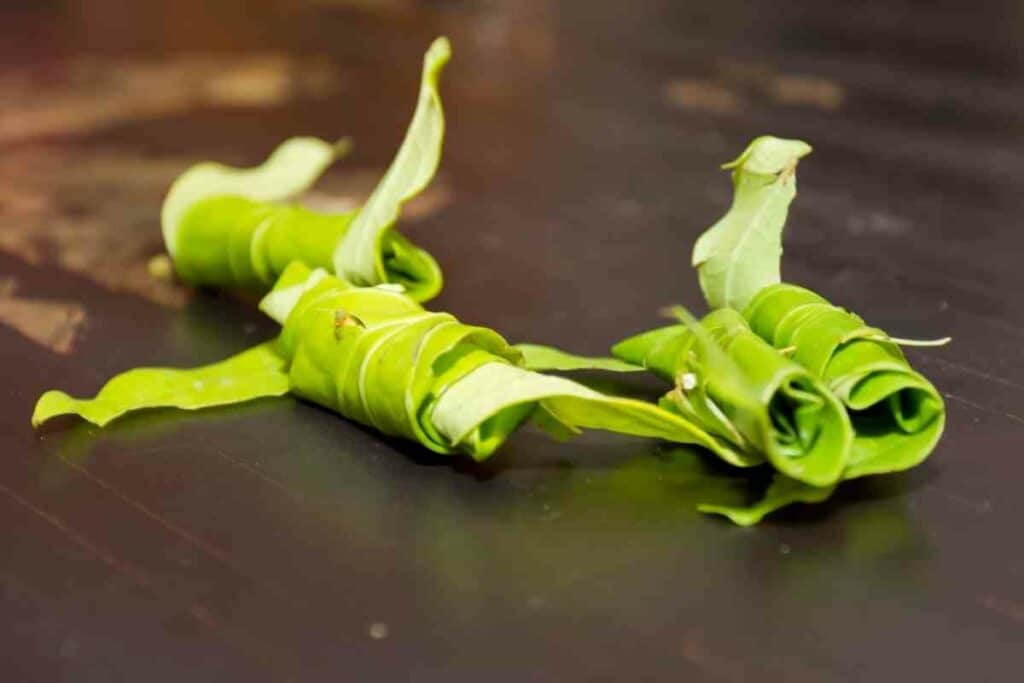
Thousands of years ago in the Phillippines, betel leaf was used as a wrapper for areca nut.
This combination when chewed, in addition to crushed sea shells, had a narcotic effect.
There is a compound in areca nuts called arecoline. It is similar to nicotine and is highly carcinogenic.
When it was found at the Duyong Cave archaeological site, evidence was found that it caused mouth and esophagus cancer.
Medicinal Uses of Betel Leaf
Betel leaf is believed to have many healing qualities.
Keep in mind that the healing qualities come from several of the different oils present in the leaf, and should not be used for mild or severe medical conditions.
With that being said, betel leaf, whether being chewed on, or turned into a paste to apply externally on the body, has been used:
- as an analgesic to relieve pain from bruises, cuts, burns, and rashes.
- as an antiseptic and antifungal to kill germs and fungus.
- to ease constipation.
- to fight depression.
- to improve oral health.
- to improve digestion.
- to manage diabetes.
- to prevent cancer.
- to reduce respiratory problems including the effects of asthma.
- to relieve joint pain.
Growing Betel Leaf
Taking care of Betel Leaf is easy if you follow these care tips.
Growing Betel Leaf from Seed
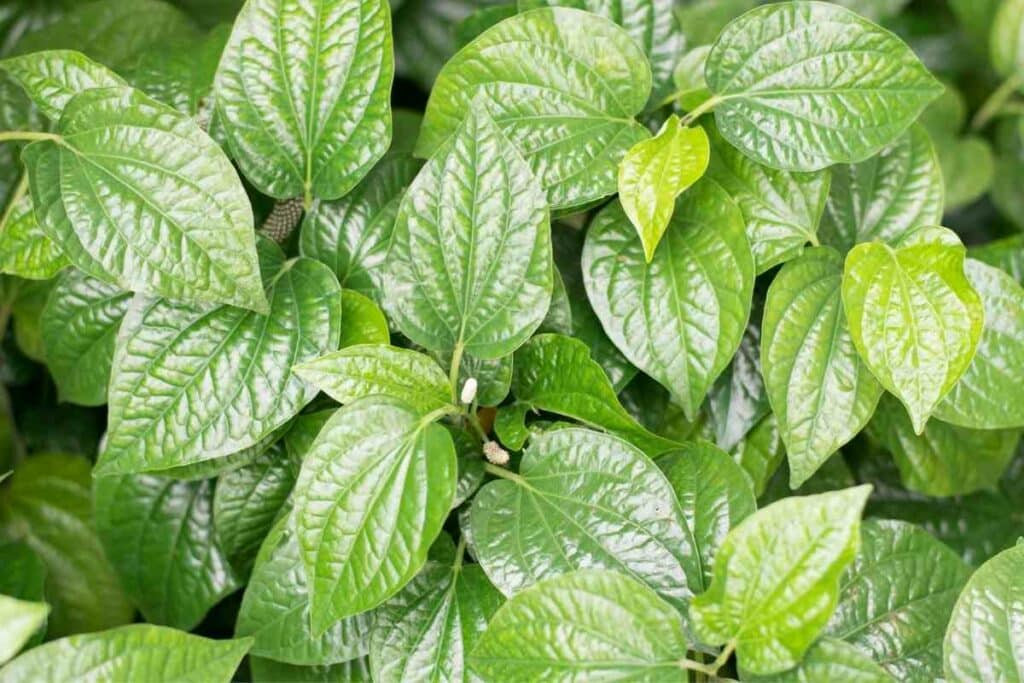
If you are interested in growing your own betel leaves, the first step is to obtain some seeds.
Betel leaf seeds aren’t easy to come by, but you’ll have the best luck finding seeds online.
Finding a betel leaf plant that produces seeds can be tricky, but if you happen to know a friend who has plenty of betel leaf plants, they might be willing to give you a few seeds to start your own plant.
When, or if, you obtain betel leaf seeds, you should follow these steps:
- Get a bag of well-draining soil.
- Fill seed starter pods with the soil and water thoroughly.
- Place up to two seeds in each pod.
- Place the starter pods near a window where it won’t receive direct sunlight. If direct sunlight falls on the plant, it can scorch the new foliage and prevent any further growth.
- Once the seeds sprout, cut the smaller plant all the way back to promote growth to the stronger plant.
- When the sprouts reach 6 inches, replant them into a larger pot.
By starting the seeds in the small pods, you reduce the risk of the rot system over-reaching and not growing as strong.
When there is too much room in a pot, the roots continue looking for more nutrients and water, and they grow outwards to fill the pot instead of focusing effort on developing a strong root system.
Growing Betel Leaf from Cuttings
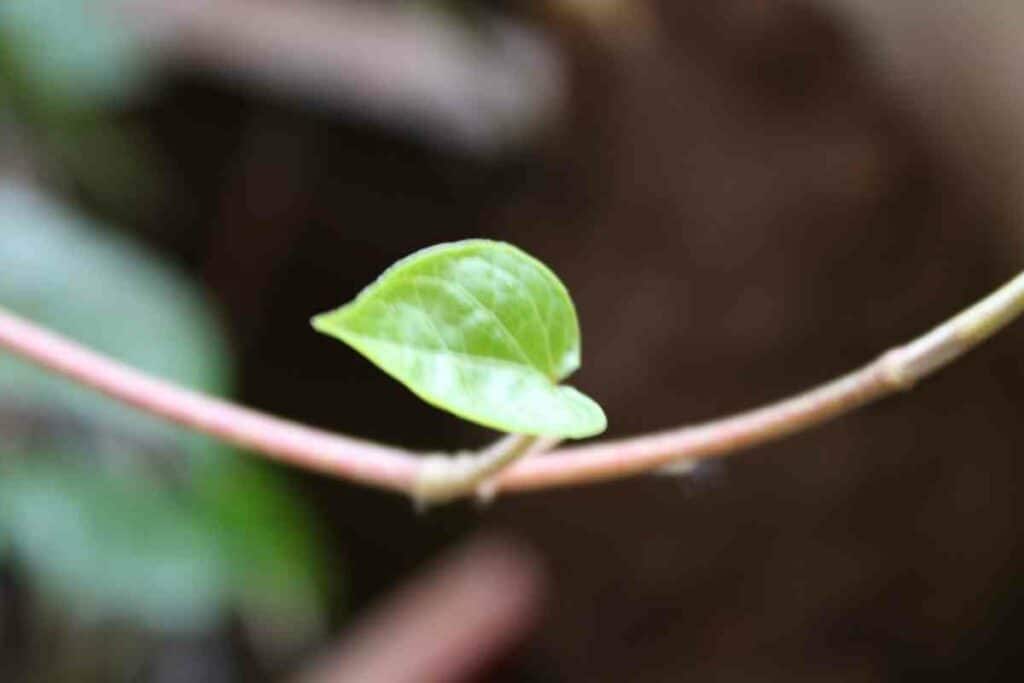
Since seeds are so difficult to come by, it is best to start with a cutting or a young plant if you want to grow your own betel leaves.
If you purchase a cutting, or you are lucky enough to receive a cutting as a gift, you’ll need to prepare the stem so it can develop roots before you can plant it.
The best length for a cutting is around 12 inches long, so if you have a say in what size cutting you’d like, only get one that’s 12 inches or longer to have the most success when growing the plant.
The First Thing You Need to Do – Is use a sharp and sterile knife to make a 45-degree cut under the bottom leaf node (where the leaf grows out of the stem).
Then carefully remove every leaf on the stem besides the two at the very top.
Once your stem is ready, place it in a cup of distilled water and place it somewhere that it will receive indirect sunlight.
Change the water every couple of days until you notice roots.
When you see several roots that are longer than one inch, you can transplant the stem into a pot or in the ground.

If you were able to obtain a cutting at least 12 inches long, this is the part where you bury it at least 6 inches deep in a pot.
If you live in USDA zones 9 to 11, you can plant your cutting directly in the ground once it has roots.
Harvesting Betel Leaves
Betel leaves will be ready to harvest about six to eight months after planting a stem in the dirt.
If you aren’t sure when the betel leaf was planted, you can harvest the leaves when they are about six inches long.
You can choose to harvest the leaves individually, or you can cut the entire plant back which will encourage new growth.
Be sure to use sharp, sterile shears or a knife to avoid damaging the plant.
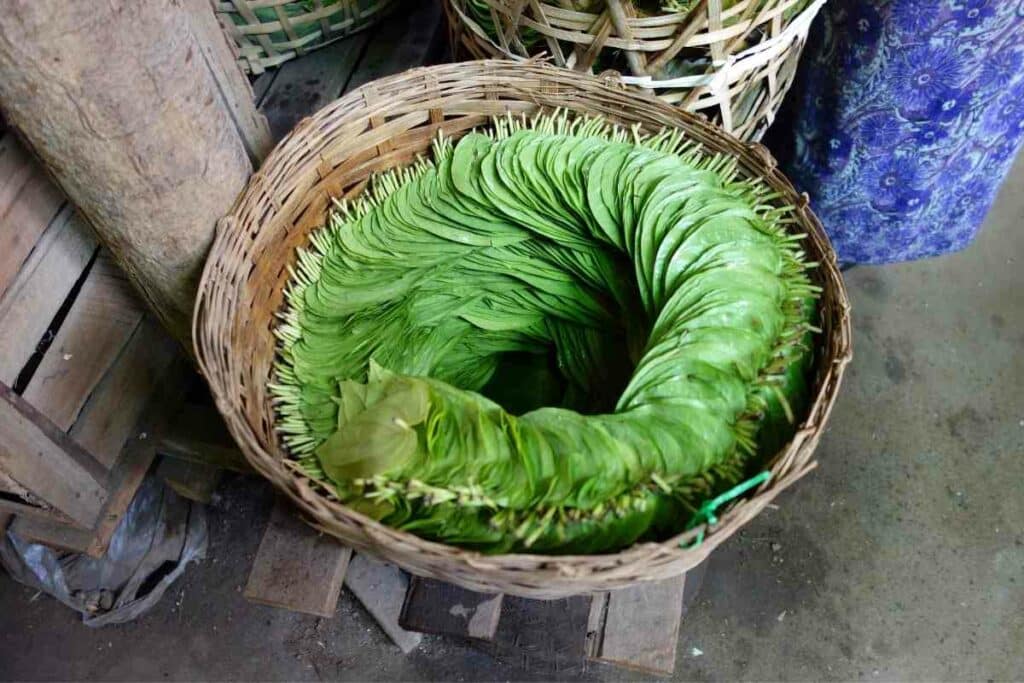
Keep In Mind – Betel leaves can be used fresh or dried, and they will keep for several months when stored in a cool, dry place.
Soil
Betel leaf plants aren’t too picky about what soil they are planted in.
They prefer well-draining soil so they aren’t sitting in pools of water, but unless you’re using clay-based soil you’re not at much risk of picking the wrong soil.
If you start with a soil that has organic compost mixed in, you’ll save yourself the hassle of finding a fertilizer or having to fertilize the soil for at least six months.
Water
Betel leaf plants need plenty of water, especially during the hot summer months.
Make sure to water your plants regularly, and give them a good soaking once a week.
You can also water your plants with a misting hose to help keep them moist.
In the Winter – You should water your betel leaves less frequently. Once a week should be enough, especially if your plants are in a pot.
You can also water your plants with a misting hose to help keep them moist.
Sunlight
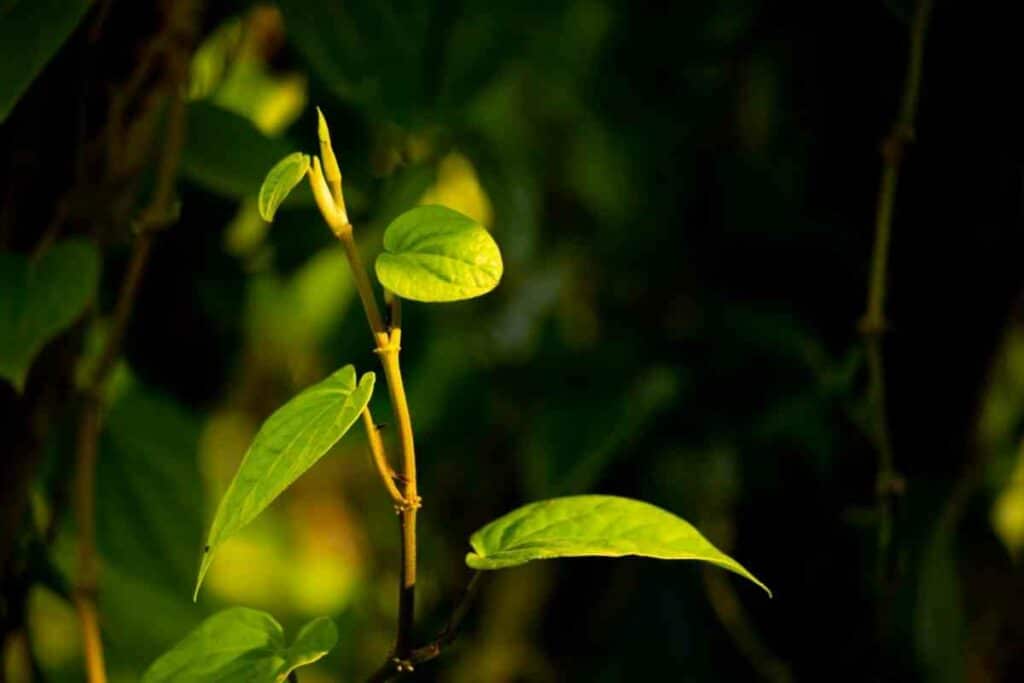
Betel leaf plants need lots of sunlight, at least six hours of sunlight each day, especially during the hot summer months.
Make sure to place your plants in a location that gets plenty of direct sunlight.
Temperature and Humidity
Betel leaf plants prefer warm temperatures and high humidity.
They will do well in temperatures between 68 and 86 degrees Fahrenheit, but they can tolerate temperatures as low as 60 degrees Fahrenheit.
Betel leaf plants also like high humidity.
If you live in an area with low humidity, you can increase the humidity around your plants by misting them regularly, placing a humidifier nearby, or by giving your plant a humidity tray.
Humidity trays are shallow dishes with water in them that you place underneath the plant pot.
Heads Up! The water shouldn’t be deep enough to touch the bottom of the plant pot, otherwise, the water will be absorbed into the soil and then taken by the roots.
As the water from the dish evaporates, it adds moisture to the air around the plant.
Fertilizer
Betel leaf doesn’t need many nutrients to thrive.
With this plant, you can get away with applying a balanced fertilizer such as a 10-10-10 or a 20-20-20 every 4 to 6 weeks.
You can also top-dress the plant with organic compost twice a year to add nutrients back into the soil.
Solving Common Betel Leaf Problems
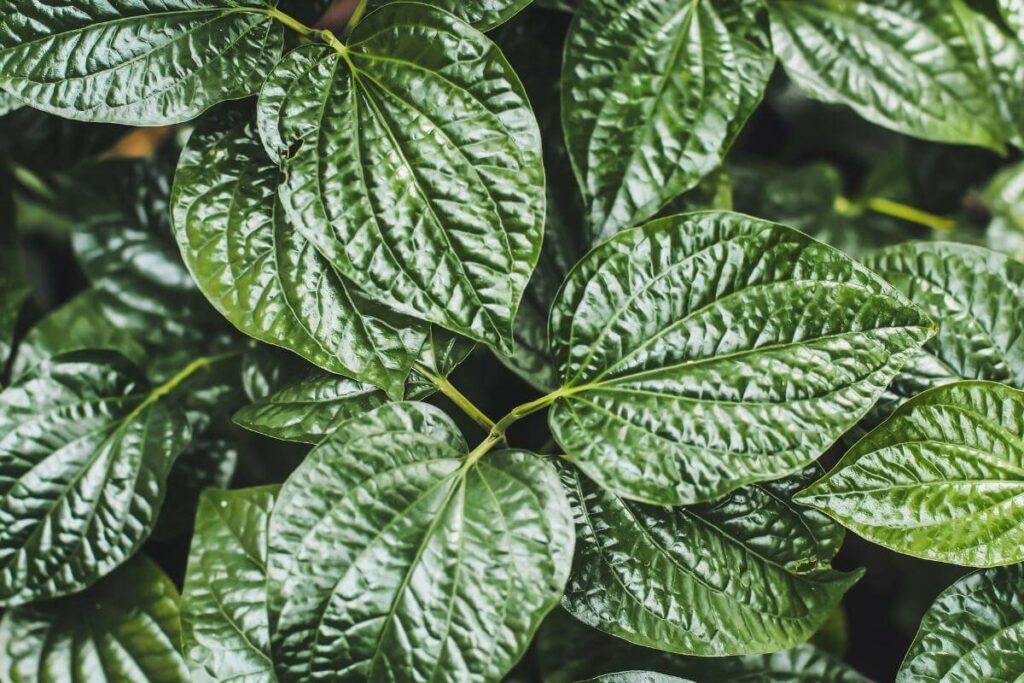
Why Does My Betel Leaf Have…
- Brown Tips: If half of the leaf turns brown, starting at the point, your plant has root rot. This happens from overwatering, and the lateral roots, the ones that spread out from the main root, are going to be severely damaged. Remove the dead leaves and let the soil dry out completely to fix this. You should also repot the plant, and remove any dead roots before putting the plant in a new pot.
- Dark Stem: When the base of the stem right above the soil level turns brown, this is a sign of severe over-watering or under-watering. Unfortunately, once you see a darkening stem, there’s nothing you can do to fix the vine. Once the black spot on the stem appears, the stem is completely damaged and the leaves aren’t going to get the water or nutrients they need. You should use a sharp pair of scissors to cut the vine as low as you can. If you continue caring for the plant, a new stem can grow where you cut the last one.
- Yellow Leaves: Yellow leaves are an early sign of over-watering. When your plant shows yellow leaves, cut back on the amount or how often you are watering your betel leaf.
Pests

Betel leaf plants are extremely susceptible to pest infestations, and many different pests would love to make a home on your plant.
These pests include:
- Aphids
- Caterpillars
- Mealy Bugs
- Scale Insects
- Shoot Bugs
- Thrips
- White Flies
Getting rid of pests and preventing them is fairly easy if you have a good insecticidal soap and neem oil.
Insecticidal soap is going to kill the pests and their eggs.
This sounds harsh, but insecticidal soap has low toxicity which is only strong enough for the tiny creatures.
It will still be safe for kids or pets to be around your plants.
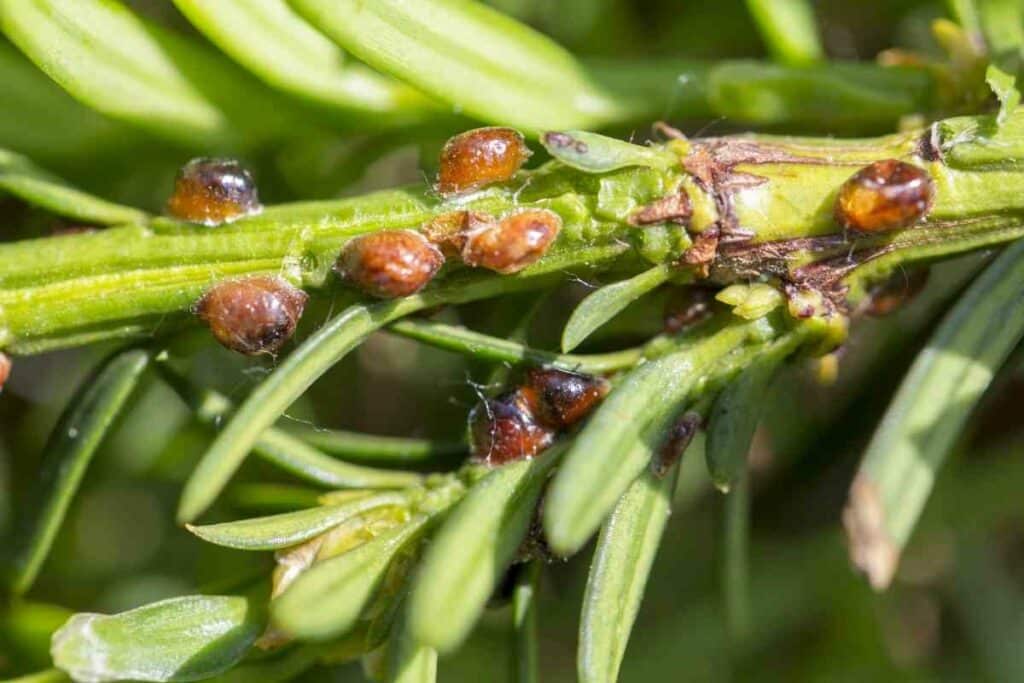
Neem oil is a natural pesticide that comes from the neem tree.
This oil will prevent pests from feeding on your plant, and it’s also going to kill any eggs that are present.
Mix 1-2 tablespoons of neem oil into a gallon of water, and apply to the leaves, stem, and soil around your plants.
Works Best – This should be done every week until you no longer see any pests. Once the bugs are gone, you can continue applying once a month for routine maintenance, just to make your plant less hospitable.
Final Thoughts
Now that you’ve read our Grower’s Guide for Betel Leaf, we hope you feel confident in your ability to cultivate this plant.
We’ve included all the information you need to get started, from what type of soil it likes to how much water and sunlight it needs.
Remember to be patient – it may take a few attempts to get it right, but we’re sure you’ll be successful with a little bit of practice.
And once you do, you’ll be able to enjoy the many benefits of this amazing plant!
